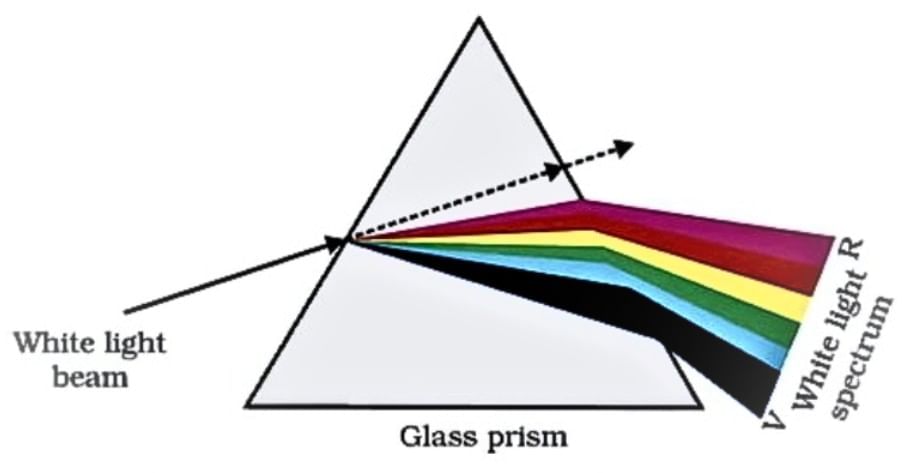Cheat Sheet: The Human Eye and the Colourful World | Science Class 10 PDF Download
The Human Eye
The human eye, a critical sense organ, enables vision of objects and colors, functioning like a camera by forming images on a light-sensitive retina.
Structure
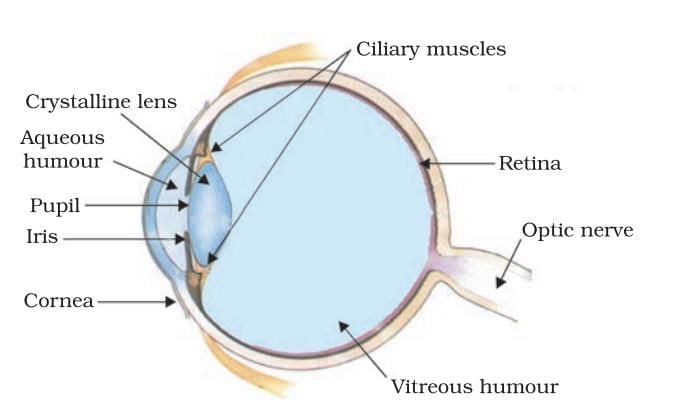
- Cornea: Transparent front bulge responsible for most light refraction.
- Eyeball: Roughly spherical, ~2.3 cm diameter.
- Iris: Dark muscular diaphragm behind cornea, controlling pupil size to regulate light entry.
- Pupil: Opening that adjusts light entering the eye.
- Crystalline Lens: Provides fine focal length adjustment for focusing.
- Retina: Delicate membrane with numerous light-sensitive cells that generate electrical signals upon illumination.
- Optic Nerve: Transmits signals to the brain for interpretation, enabling perception of objects as they are.
Power of Accommodation
1. Mechanism
Ciliary muscles alter the crystalline lens’s curvature, adjusting its focal length.
- Relaxed muscles: Lens thins, increasing focal length for clear distant vision.
- Contracted muscles: Lens thickens, decreasing focal length for clear near vision.
2. Accommodation
- The ability of the eye lens to adjust its focal length to focus on objects at varying distances.
3. Limits
- Near Point: Minimum distance for clear, strain-free vision, ~25 cm for young adults with normal vision.
- Far Point: Farthest distance for clear vision, infinity for a normal eye.
Defects of Vision and Their Correction
Common Defects: Myopia, hypermetropia, and presbyopia, caused by reduced accommodation, leading to blurred vision.
1. Myopia (Near-Sightedness)
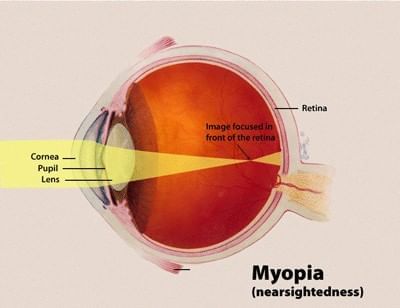
- Description: Clear vision for nearby objects but not distant ones; far point closer than infinity (e.g., a few meters).
- Cause: Image forms in front of the retina due to excessive lens curvature or an elongated eyeball.
- Correction: A Concave lens shifts the image to the retina.
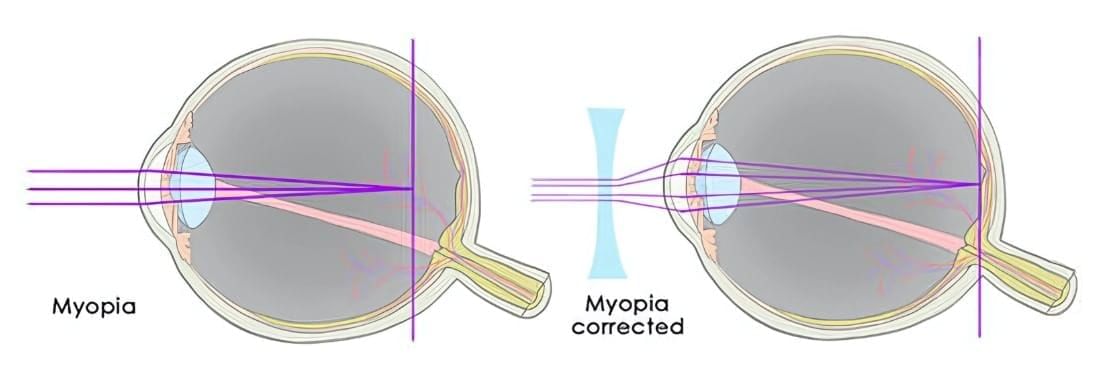
2. Hypermetropia (Far-Sightedness)
- Description: Clear vision for distant objects but not nearby ones; near point beyond 25 cm.
- Cause: Image forms behind the retina due to long focal length or a small eyeball.
- Correction: A Convex lens provides extra focusing power to place the image on the retina.
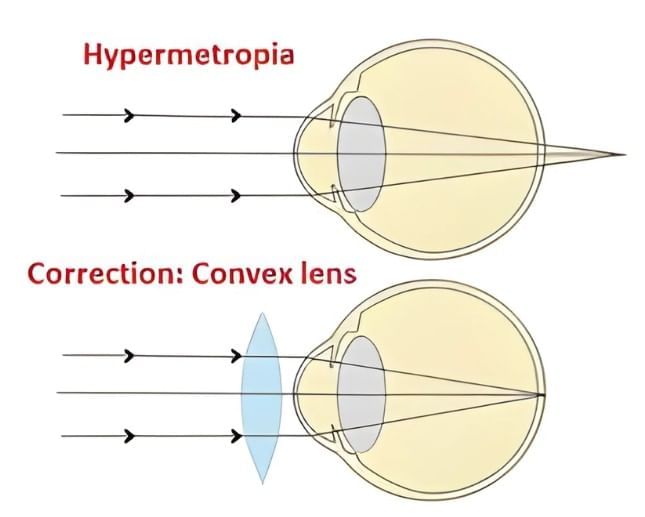
3. Presbyopia
- Description: Age-related loss of accommodation, making near vision difficult.
- Cause: Weakened ciliary muscles and reduced lens flexibility.
- Correction: Bi-focal lenses (upper concave for distance, lower convex for near), contact lenses, or surgical interventions.
Note: Some individuals with both myopia and hypermetropia use bi-focal lenses.
4. Cataract
Cloudy lens in old age causing partial or complete vision loss, treatable via surgery.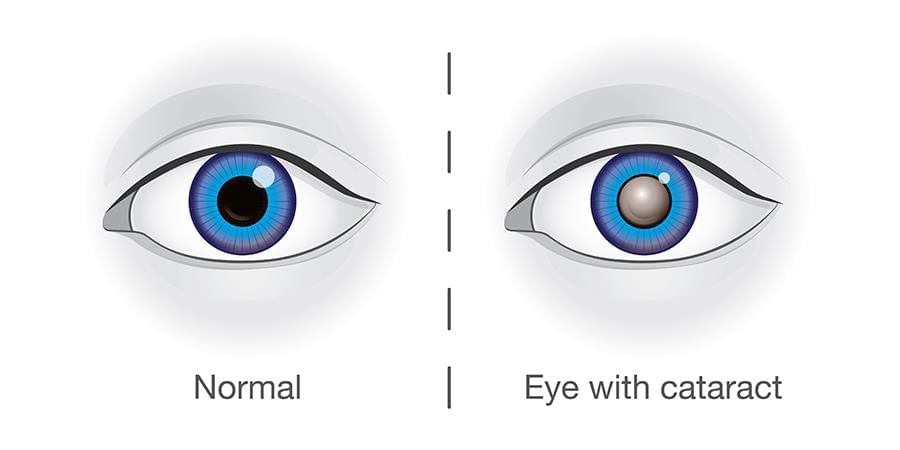
Eye Donation
- Importance: Donated eyes can treat corneal blindness (~4.5 million affected, 60% children under 12).
- Eligibility: Any age or sex, including spectacle users or those with cataract surgery, excluding those with AIDS, Hepatitis B/C, rabies, leukaemia, tetanus, cholera, meningitis, or encephalitis.
- Process: Eyes removed within 4-6 hours post-death by eye bank teams (10-15 minutes, no disfigurement). Evaluated for transplantation; unsuitable eyes used for research/education.
- Impact: One pair of eyes can restore vision for up to four people.
Refraction of Light Through a Prism
Prism Structure
Triangular glass prism with two triangular bases and three inclined rectangular lateral surfaces; angle between lateral faces is the angle of the prism.
Refraction 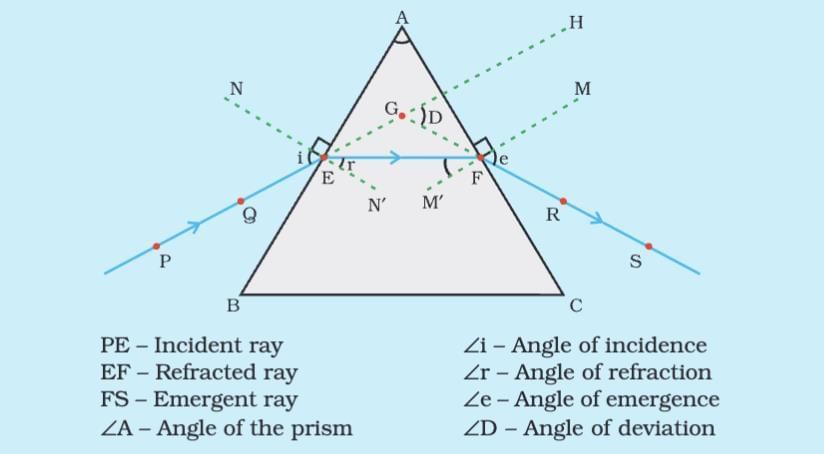
Dispersion of White Light by a Glass Prism
White light splits into a spectrum (VIBGYOR: Violet, Indigo, Blue, Green, Yellow, Orange, Red) when passing through a prism. This is called dispersion of light.
- Cause: Different colors bend by varying angles; violet bends most, red least, creating distinct paths.
- Newton’s Experiment: A second inverted prism recombines the spectrum into white light, confirming sunlight’s composite nature.
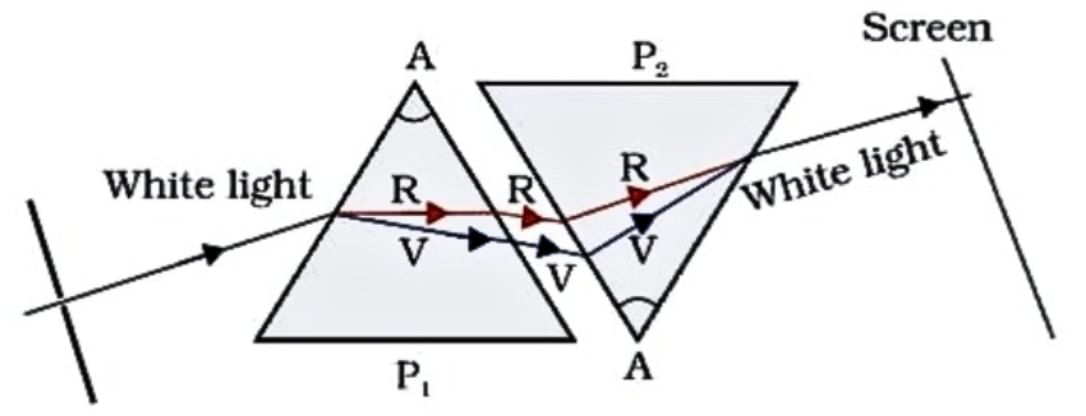
Rainbow: Natural spectrum formed by dispersion, refraction, internal reflection, and refraction in water droplets, opposite the Sun.
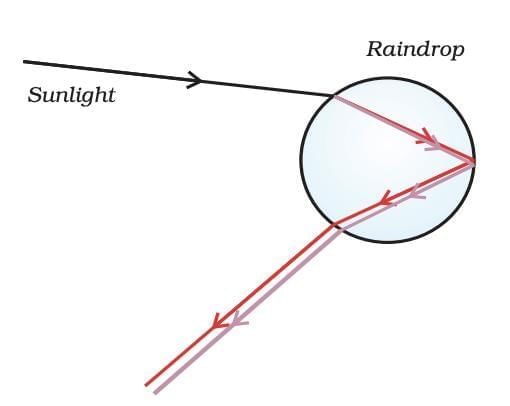
Atmospheric Refraction
Refraction by Earth’s atmosphere due to gradually changing refractive index with altitude is called atmospheric refraction.
1. Twinkling of Stars
Starlight refracts continuously, bending toward the normal, shifting apparent position.
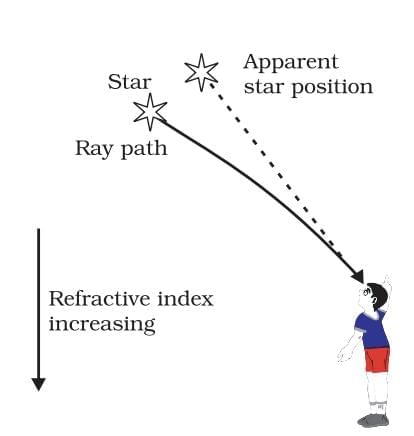
- Fluctuating atmospheric conditions cause stars to appear brighter or fainter (twinkling).
- Planets, as extended sources, don’t twinkle as light variations average out.
2. Advance Sunrise and Delayed Sunset
Sun visible ~2 minutes before actual sunrise and after actual sunset due to atmospheric refraction.
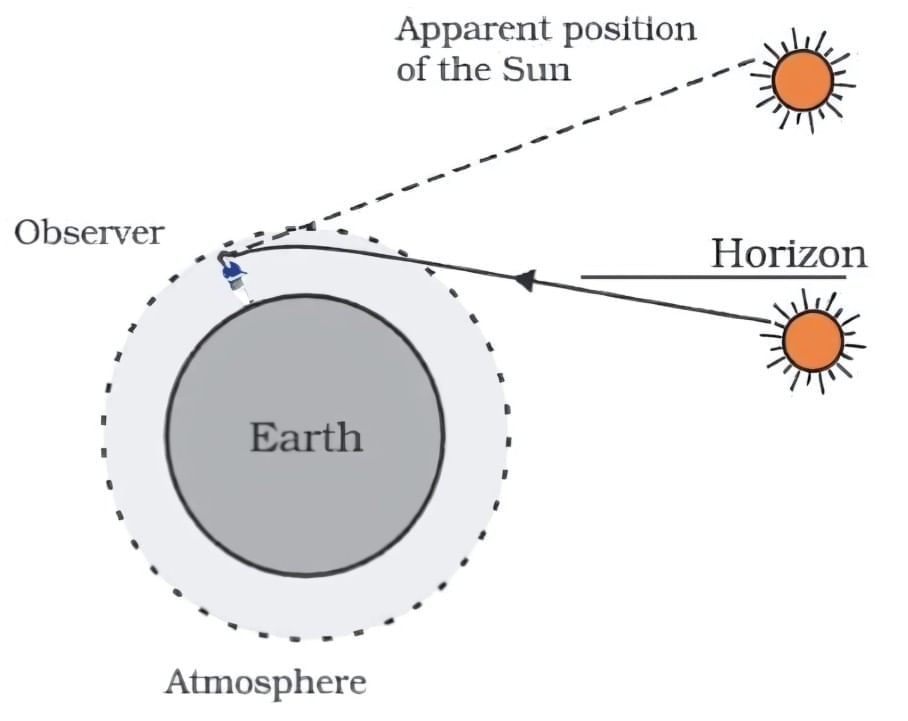
Light bends toward the normal, making the Sun appear higher; also causes apparent flattening of the Sun’s disc at horizon.
Scattering of Light
1. Tyndall Effect
- Scattering by colloidal particles (e.g., smoke, dust, water droplets) makes light paths visible (e.g., sunlight in a smoke-filled room or forest mist).
Color Dependence
- Smaller particles scatter shorter wavelengths (blue); larger particles scatter longer wavelengths (red) or white light.
2. Blue Sky
- Air molecules and fine particles, smaller than visible light wavelengths, scatter blue light (shorter wavelength) more than red (1.8 times longer).
- Scattered blue light reaches the eyes, making the sky appear blue. Without atmosphere, the sky appears dark (e.g., to astronauts).
3. Red Sunrise/Sunset
- At sunrise/sunset, sunlight travels a longer atmospheric path, scattering shorter wavelengths (blue) out, leaving red light to dominate.
4. Deep Sea Color
- Water absorbs longer wavelengths (red) more than shorter ones (blue), making deep sea appear blue due to scattered blue light.
5. Red Danger Signals
- Red light scatters least in fog or smoke, remaining visible at a distance.
|
80 videos|569 docs|80 tests
|
FAQs on Cheat Sheet: The Human Eye and the Colourful World - Science Class 10
| 1. What is the power of accommodation in the human eye? |  |
| 2. What are the common defects of vision and how can they be corrected? |  |
| 3. How does light refract when it passes through a prism? |  |
| 4. What is atmospheric refraction and why is it important? |  |
| 5. What is the scattering of light, and how does it contribute to the color of the sky? |  |


